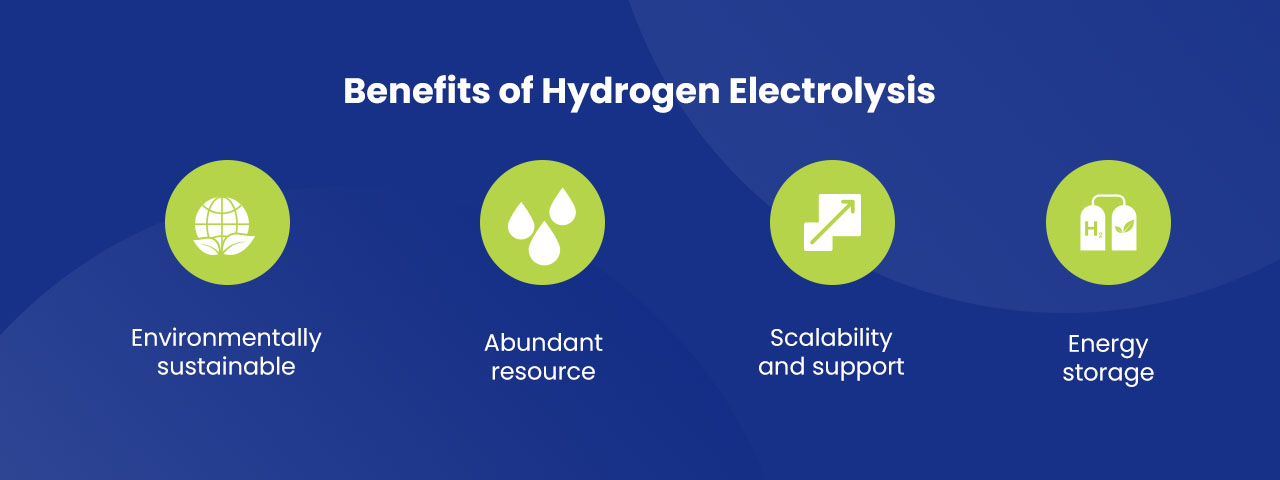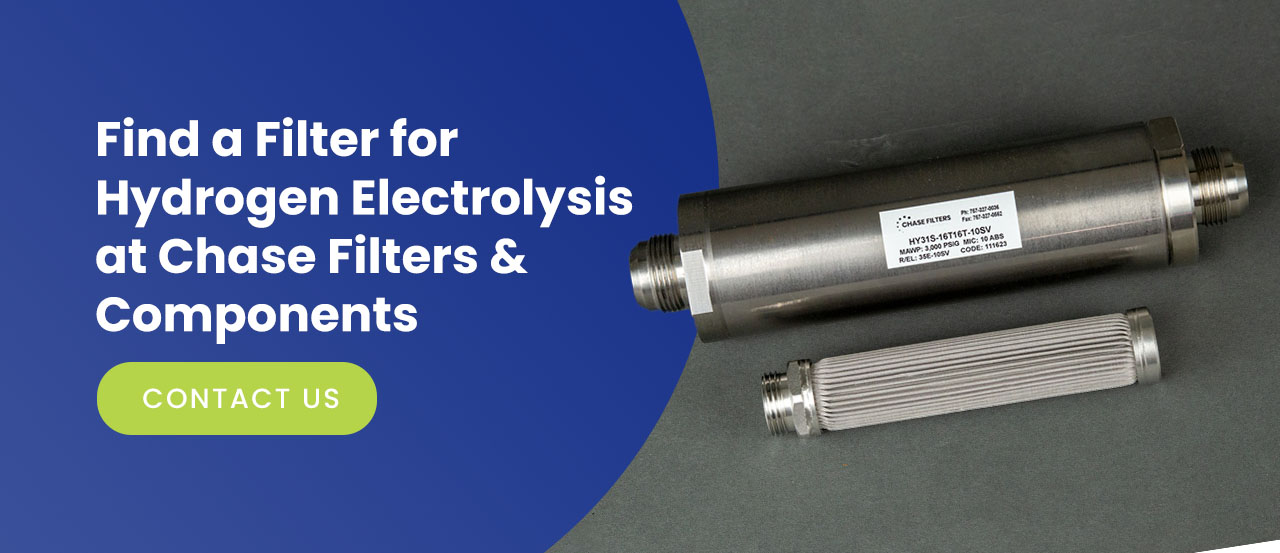March 3, 2025
Guide to Hydrogen Electrolysis
Hydrogen — which is the lightest and most abundant element in the atmosphere — is essential for life. Without it, we wouldn’t have the sun, and many people also consider it the clean energy source of the future. As such, it’s important to know how to produce hydrogen. One method involves splitting water molecules into their individual atoms through a process called hydrogen electrolysis.
This guide to hydrogen electrolysis will explain the concept and process in more detail and discuss the role filters play in hydrogen production and purification.
What Is Hydrogen Electrolysis?
Hydrogen electrolysis uses electricity to split water molecules (H2O) into hydrogen (H2) and oxygen (O) gases. Electrolysis hydrogen generation is one of the most environmentally friendly methods of producing hydrogen since it only releases oxygen as a byproduct.
The process involves an electrolyzer, which consists of two electrodes — a positive electrode (anode) and a negative electrode (cathode). The electrodes are submerged in water and connected to a power source, and when the electric current passes through the water, oxygen is released and hydrogen gas is created.
The Electrolysis Process
Here’s how hydrogen production electrolysis generally works in more detail:
- A power source gets connected to the anode and cathode to create an electric circuit, and the electrodes are submerged in water.
- An electric current starts flowing through the water, which helps facilitate the movement of ions.
- The anode attracts hydroxide ions (OH-), causing the release of oxygen. The cathode attracts the hydrogen ions (H+) to generate hydrogen gas.
- Hydrogen gas is captured and stored either as compressed gas or in a liquified form, and oxygen is released back into the air or stored to supply other industrial processes.
What Happens to the Hydrogen and Oxygen?
Hydrogen from electrolysis is captured and distributed through any of these three methods:
- Pipelines: This is the most cost-effective way to deliver large volumes, but limited delivery resources mean this process isn’t used often.
- High-pressure tube trailers: For distances under 200 miles, compressed hydrogen gas is transported via rail car, ship or truck.
- Liquefied hydrogen tankers: For longer distances, hydrogen is liquified and transported via truck, ship or rail car.
Hydrogen is used for various processes, including manufacturing ammonia, making margarine through catalytic hydrogenation of organic compounds, and creating alternative, more sustainable fuel. Normally, oxygen is released into the air during electrolysis, but when captured, oxygen cells can be used in conjunction with hydrogen cells to generate electricity.
Benefits of Hydrogen Electrolysis
Although there are many different ways to produce hydrogen, hydrogen electrolysis has some significant advantages over other methods:
- Environmentally sustainable: Hydrogen produced through electrolysis is more sustainable since oxygen is the only byproduct. Hydrogen cells can also be used to generate clean energy with a hydrogen fuel cell.
- Abundant resource: Hydrogen electrolysis uses a readily available resource — water — to produce hydrogen.
- Scalability and support: Electrolysis systems can be designed at such a scale that they can help stabilize the energy grid during peak periods.
- Energy storage: Excess electricity generated from renewable sources can be used to power the electrolysis process. Hydrogen can then be stored and used later as a clean energy source when renewable energy generation is low.
Types of Filters Used in Hydrogen Electrolysis
Hydrogen electrolysis has become an important part of producing clean energy by harnessing water. Therefore, filters play a crucial role in preventing contaminants from entering the electrolyzer and affecting its performance. When hydrogen is produced through electrolysis, impurities and contaminants can be present in the water source or introduced during the electrolysis process. These impurities may include minerals, particles or gases that need to be removed, sometimes through multiple levels of filtration, to ensure the purity of hydrogen and its working efficiency.
Filters can help remove impurities from the water source before electrolysis takes place, and they can also purify the generated hydrogen gas after the process to remove any remaining impurities or moisture. There are different types of filters used in hydrogen electrolysis, depending on the specific requirements of the hydrogen production system:
- Particulate filters: These filters remove solid particles and debris from the water source before they enter the electrolyzer. They prevent any impurities and contaminants from clogging or damaging the electrolyzer components.
- Hydrogen filters: After hydrogen electrolysis, any leftover water needs to be removed. High-pressure hydrogen filters separate liquid and moisture from the gas, ensuring it remains high-quality and able to perform in other applications.
- Coalescing filters: Similar to hydrogen filters, coalescing filters separate water from the gas by letting it drain away. These filters are vital, as they decrease the likelihood of vapor causing damage to a system’s essential components.
The Importance of Filter Maintenance and Replacement
Maintaining and cleaning filters are crucial for the filtration system’s effectiveness and efficiency. Here’s why filter maintenance is necessary:
- Optimal filtration performance: Contaminants accumulate in filters over time and can lead to decreased hydrogen production, application safety and system effectiveness.
- System longevity: Well-maintained filters contribute to the longevity of the entire electrolyzer. When filters are not maintained, they can put strain on other components, leading to increased wear and tear and potentially causing system failures.
- Consistent output quality: Filters play a crucial role in maintaining the desired quality of the water used for hydrogen electrolysis and the hydrogen output.
- Safety and health: Filter maintenance contributes to a safe and healthy working environment. Clogged or damaged filters may fail to remove harmful contaminants, compromising gas quality or leading to a potential system failure.
Signs to look out for that indicate filters need attention include lower levels of hydrogen gas purity or unusual noises in the system. Inspect filters regularly and look for any visible signs of damage or dirt buildup.
Find a Filter for Hydrogen Electrolysis at Chase Filters & Components
Chase Filters & Components manufactures filters for multiple industries, including those fitted for alternative fuel applications such as hydrogen production. With over 30 years of experience in the hydrogen filter market, we are able to help you find the right filter type and size for your system. Our filters can withstand high pressures, temperatures and corrosion, lowering the level of maintenance needed.
If you need some guidance on the type of filters you may need, our representatives are happy to help! Contact our team today to learn more about our filters and components.


